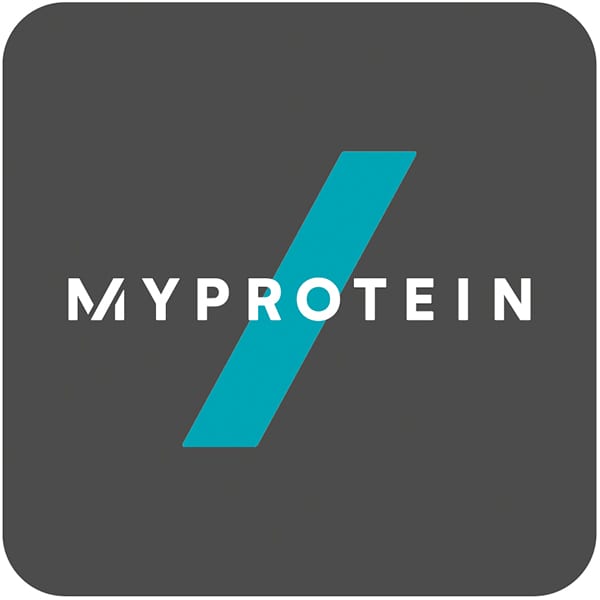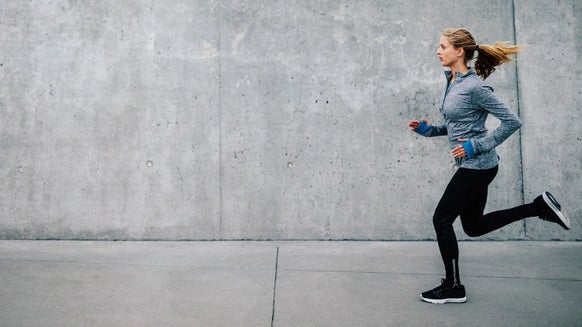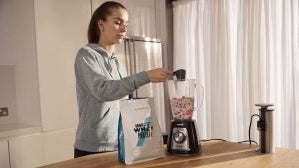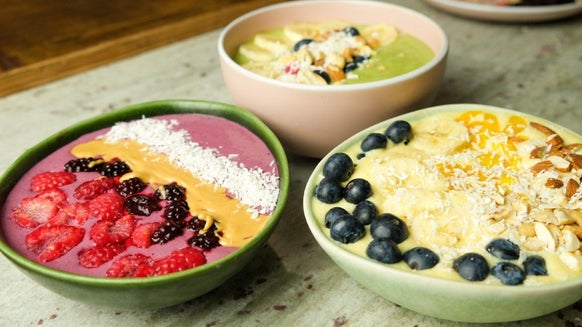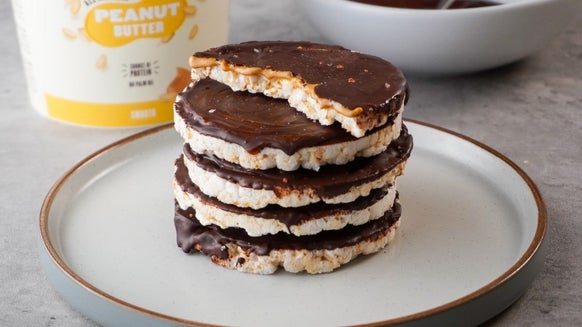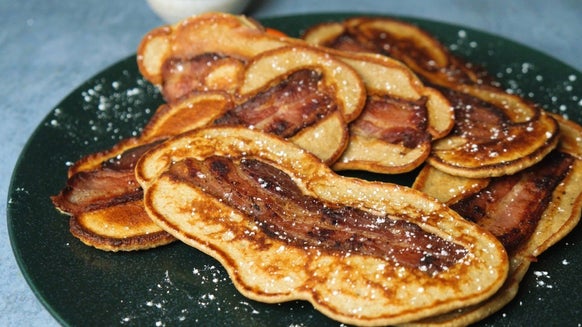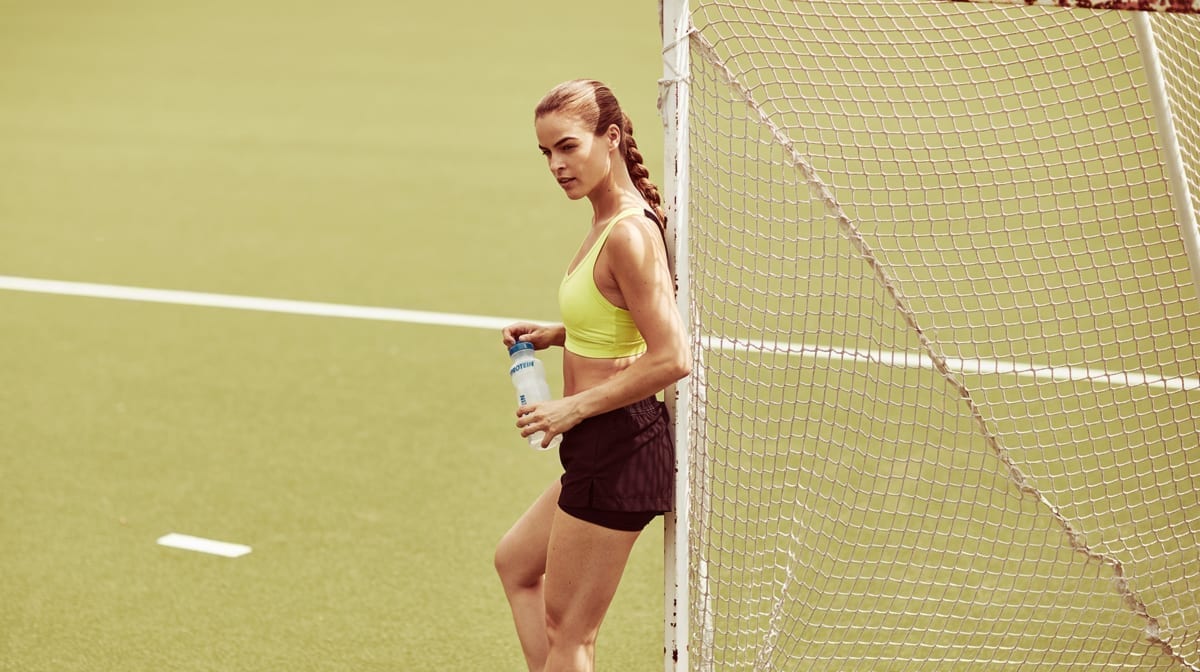
Have you ever wondered how berries get their varied and bright colours?
The answer is all in the pigment which lies in their skin!
These richly collected cells in the skin of berries which give the skin their bright colours, are the home for a variety of biological compounds. One of which is a specific flavonoid, which we will discuss here as a source of a plethora of health benefits.
Flavonoids (or bioflavonoids) are a group of molecules created during plant metabolism. In fact there are 6,000 different types of these metabolites (1). There are a number of different health benefits ascribed to these molecules including anti-oxidant and anti-inflammatory properties.
This article will examine one particular member of this group, one which has even been deemed the most important of the flavonoids (2); and the one making up the key structure of the pigment in fruits.
This article will discuss Anthocyanin and how it can boost your health and performance.
What Is Anthocyanin?
In truth, anthocyanin is similar to but not exactly a flavonoid. Instead it is part of the flavonoid group of phytochemicals (naturally occurring chemicals in plants).
There are about 17 anthocyanidins in total, with six (cyanidin, delphinidin, petunidin, peonidin, pelargonidin, and malvidin) having the most importance to humans (3-4).
They occur naturally in a variety of fruits and vegetables, but are particularly concentrated in a number of berries (e.g. strawberry, cherry, raspberry, blueberry). The anthocyanidins exist as the pigment which gives berries their colour (5-6); and as such are normally sufficiently consumed by most people (7-8).
Historically they have been utilised for remedies of a diverse number of diseases, including high blood pressure, vision disorders and infections just to name few (179-10). As such, proliferating their reputation as all around super supplement.
Oral consumption of anthocyanin in fruit, extracts or supplements has proved to be effective in preventing or treating such diseases (11-13). .
How Do Anthocyanins Work?
Oxidative stress is a state where the quantities of free radical atoms (reactive oxygen species) are greater than the capacity of anti-oxidants (compounds which delay or inhibit oxidation by free radicals). This imbalance leads to oxidation of proteins, lipids and even DNA (14).
The degree of anti-oxidant activity of anthocyanins have been widely confirmed (15-18).
However, the ability of anthocyanins to counteract reactive oxygen species is different between one type to another, and is wholly dependent upon each compound’s chemical structure (19). Each type of anthocyanin may react differently to a different type of free radical, which some what leads to differing research results.
Unfortunately some of the positive experimental (in vitro) studies showing high anti-oxidant capacity (20-23) are not entirely supported by human food trials (24).
However, it is possible that very low concentrations of anthocyanins may also modulate cell signalling and other biological processes by non-antioxidant mechanisms which may explain the difficulty in observing anti-oxidant effects in human trials.
Studies have also shown that anthocyanins may have an anti-inflammatory role via a number of cellular mechanisms (5).
Anthocyanins inhibits the biological activity of some pro-inflammatory proteins called cytokines by suppressing specific cellular signalling pathways (20,25).
For example, they can work to inhibit the pro-inflammatory enzyme, cyclooxygenase-2 (COX-2) which is often responsible for pain (26-27).
In truth it is the combined anti-oxidant and anti-inflammatory cellular activity which facilitates the clinical uses of anthocyanin when treating disease.
Anthocyanin | Health Benefits?
However, whilst some studies and media publications concentrate solely on the anti-oxidant and anti-inflammatory benefits of Anthocyanin, it is apparent in the research that other mechanisms are potentially as responsible for the health benefits described (13,28-30).
Some of these additional biological effects include protection against:
- Reactions which break down DNA
- Hormone-dependent disease development (oestrogen activity)
- Lipid peroxidation (lipid breakdown)
- Fragility of capillary blood vessels (12,33-36)
It is the combination of these mechanisms which allows arthocynanins to be beneficial across so many disease states. Below we shall examine some of the specific health issues where anthocyanins have been deemed beneficial.
Clarity of vision, or how well defined you can see an image (visual acuity), can be improved through administration of anthocyanin (37). However, this is not the only part of vision which can be improved. The ability to see in the dark (night vision) is also enhanced through the provision of anthocyanin (37).
Interestingly researchers have also suggested a relationship between anthocyanins and weight loss (13). This study provided mice a high fat diet in combination with anthocyanins. Their results found an effective inhibition of body weight and fat (adipose) tissue gain.
They also saw the prevention of a number of metabolic disease factors including hyperglycaemia (high blood sugar) and hyperinsulinaemia. This provides evidence of anthocyanins role in management of obesity and metabolic syndrome.
A final health related benefit of anthocyanin is through modulation of the nervous system to boost cognition and memory, whilst helping to prevent age related neurodegeneration.
Experiments with mice show both enhanced cognitive function and reduction in lipid peroxidation in brain tissues(46). This is supported by evidence showing that administration of high arthocynanin content blueberry extract leads to effective reversal of neurodegenerative memory and motor functions (47).
Anthocyanin & Athletic Performance
The question remains then, how can arthocynanin use its various properties to assist athletic performance in healthy individuals?
The larger group of bioflavonoids have been shown to influence the oxidation process in muscles during endurance exercises with a resulting increase in maximal oxygen consumption (VO2 max) (48-50). This has been postulated to be due to an increase in the number of mitochondria inside the muscle cells.
There is also evidence that these compounds can reduce muscular damage and post exercise soreness, whilst simultaneously improving neuromuscular function (51-52) and strength (53).
1) A recent study from the International Journal of Preventative Medicine underwent a double-blind, randomised controlled trial to examine the effect of anthocyanin supplementation on parameters of exercise performance (2). These researchers took 54 female and male athletes and compared the intake of 100mg of anthocyanin per day to 100mg of placebo for a period of 6 weeks.
During this period the subjects performed a training regime 3 times per week of cycling and running at an intensity of 60-80% of their target heart rate. Their results shows that VO2 max made significant increases in the anthocyanin group beyond any change in the placebo group (p? 0.0001). Thus indicating that supplementation with this particular compound shows specific benefits in endurance based exercise training!
2) Separate animal model experiments support these findings indicating a relationship between anthocyanin supplement consumption and muscle growth and exercise capacity.
For example, a 7 week period of high intake in rats shows higher body weight and muscle growth, alongside increased swimming time to fatigue, compared to controls (54). Also, studies examining products which have a high anthocyanin content (as opposed to just anthocyanin supplementation) also indicate similar exercise related benefits.
3) Studies on cherry and blueberry juice (rich in anthocyanin) show beneficial effects on muscle damage and improved recovery following eccentric exercise (55-61). Alternately, Montmorency cherries (again high in anthocyanin content) were investigated to see their benefits on unilateral leg exercise induced muscle damage and function (62). In this study of 10 trained male athletes, a cherry extract supplement was examined.
Each participant underwent 10 sets of 10 single leg extensions at 80% of one repetition maximum (1RM) before and after 2 weeks of supplementation. Their results indicated that maximum voluntary force recovery was faster in the high anthocyanin cherry extract group, compared to a standard fruit concentrate.
Showing an improvement in muscle recovery particularly in the supplement which had high concentration of anthocyanin. It is thought that such muscular benefits are likely to be due to the increase anti-oxidant capacity for these athletes (63).
Anthocyanin | Side Effects
Due to the long history of consumption of foods which have a high content of anthocyanin (different berries for example); such flavonoids are generally regarded as safe and well tolerate in humans (64).
A large analysis of 133 randomised controlled trials examined the safety of flavonoids (including anthocyanin) and failed to indicate any adverse effects or toxicity issues of anthocyanin in particular (65).
It is worth noting that as a group flavonoids may have issues with toxicity dependent upon the type, dose and duration of intake (66)- particularly in high risk groups such as the elderly (67).
However, no such issues were indicated for anthocyanin in this study.
Anthocyanin | Dosage
The daily intake of anthocyanin is relatively high across the population at 500mg to 1g (68).
However, athletic and health related benefits require only an additional 100mg to boost anti-oxidant and anti-inflammatory capacity (2).
Take Home Message
So ends our whistle-stop tour of the incredible anthocyanin compound.
From, what is innately a biproduct of natural evolution, a compound flourished which can boost anti-oxidant and anti-inflammatory function, whilst also modifying cellular signalling, to aid health and physical performance.
Therefore, whether you want to improve your vision, takes steps to help prevent against aging and disease, or even enhance your endurance performance, anthocyanin may be worth a look!
- Erdman JW, Jr, Balentine D, Arab L, Beecher G, Dwyer JT, Folts J, et al. Flavonoids and heart health: Proceedings of the ILSI North America flavonoids workshop, May 31-June 1, 2005, Washington, DC. J Nutr. 2007;137:718S–37.
Yarahmadi, M., Askari, G., Kargarfard, M., Ghiasvand, R., Hoseini, M., Mohamadi, H. and Asadi, A., 2014. The Effect of Anthocyanin Supplementation on Body Composition, Exercise Performance and Muscle Damage Indices in Athletes. International journal of preventive medicine, 5(12), p.1594. - Harborne J.B. Phenolic compounds in phytochemical methods – a guide to modern techniques of plant analysis. Third edition. Chapman & Hall, New York. (1998) 66-74
- Jaganath I.B., Crozier A. 2010. Dietary flavonoids and phenolic compounds. In Plant Phenolics and Human Health: Biochemistry, Nutrition, and Pharmacology (edited by Cesar G. Fraga). John Wiley & Sons, Inc., Hoboken, New Jersey.
- Miguel, M.G., 2011. Anthocyanins: Antioxidant and/or anti-inflammatory activities. J Appl Pharm Sci, 1(06), pp.7-15.
Seeram, Navindra P. (2008). "Berry Fruits: Compositional Elements, Biochemical Activities, and the Impact of Their Intake on Human Health, Performance, and Disease". Journal of Agricultural and Food Chemistry 56 (3): 627–9. - Igarashi K, Kimura Y, Takenaka A. Preventive effects of dietary cabbage acylated anthocyanins on paraquat-induced oxidative stress in rats. Biosci Biotechnol Biochem. 2000;64:1600–7.
- Heim KE, Tagliaferro AR, Bobilya DJ. Flavonoid antioxidants: Chemistry, metabolism and structure-activity relationships. J Nutr Biochem. 2002;13:572–8
- Rice-EvansC,PackerL,eds. Flavonoids inHealthand Disease. NY: Marcel Dekker; 1998. [18] Smith M, Marley K, Seigler D, Singletary K, Meline B. Bioactive properties of wild blueberry fruits. J Food Sci. 2000;65:352–356.
- Wang C, Wang J, Lin W, Chu C, Chou F, Tseng T. Protective effect of Hibiscus anthocyanins against tert-butyl hydroperoxide-induced hepatic toxicity in rats. Food Chem Toxicol. 2000;38(5):411–416.
- McDougall G.J., Dobson P., Smith P., Blake A., Stewart D. Assessing potential bioavailability of raspberry anthocyanins using an in vitro digestion system. J. Agric. Food Chem. 2005; 53: 5896-5904.
- Ramirez-Tortosa C., Andersen O.M., Gardner P.T., Morrice P.C., Wood S.G., Duthie S.J., Collins A.R., Duthie G.G. Anthocyanin-rich extract decreases indices of lipid peroxidation and DNA damage in vitamin E-depleted rats. Free Radical Biol. Med. 2001, 31: 1033-1037.
- Tsuda T., Horio F., Uchida K., Aoki H., Osawa T. Dietary cyanidin 3-O-beta-D-glucoside-rich purple corn color prevents obesity and ameliorates hyperglycemia in mice. J. Nutr. 2003, 133, 2125-2130.
- Dai J.; Mumper R.J. Plant phenolics: extraction, analysis and their antioxidant and anticancer properties. Molecules 2010; 15: 73137352.
- Heinonen I. M., Meyer A.S., Frankel E.N. Antioxidant activity of berry phenolics on human low-density lipoprotein and liposome oxidation. J. Agric. Food Chem. 1998; 46: 4107-4112.
- Muselík J., García-Alonso M., Martín-López M.P., Žemli?ka M., Rivas-Gonzalo J.C. Measurement of antioxidant activity of wine catechins, procyanidins, anthocyanins and pyranoanthocyanins. Int. J. Mol. Sci. 2007; 8: 797-809.
- Fiander H., Schneider H. Dietary ortho phenols that induce glutathione S- transferase and increase the resistance of cells to hydrogen peroxide are potential cancer chemopreventives that act by two mechanisms: the alleviation of oxidative stress and the detoxification of mutagenic xenobiotics. Cancer Lett 2000;156:117-124.
- Turner M.K. Anthocyanins increase antioxidant enzyme activity in HT-29 adenocarcinoma cells. MsC thesis. 2009. Athens, Georgia, USA.
- Kay C. Analysis of the bioactivity, metabolism, and pharmacokinetics of anthocyanins in humans. PhD thesis. 2004; University of Guelph, Ontario, Canada, pp. 1-9.
- Wang H., Nair M.G., Strasburg G.M., Chang Y., Booren A.M., Gray J.I.. DeWitt D.L. Antioxidant and anti-inflammatory activities of anthocyanins and their aglycon, cyanidin, from tart cherries. J. Nat. Prod.1999; 62: 294–296.
- Zheng W., Wang S.Y. Oxygen radical absorbing capacity of phenolics in blueberries, cranberries, chokeberries, and lingonberries. J. Agric. Food Chem. 2003; 51: 502-509.
- Galvano F., La Fauci L., Lazzarino G., Fogliano V., Ritieni A., Ciappellano S., Battistini N.C., Tavazzi B., Galvano G. Cyanidins: metabolism and biological properties. J. Nutr. Biochem. 2004; 15: 2-11.
- Miguel M.G., Dandlen S., Neves M.A. Role of anthocyanins in the antioxidant ability of pomegranate. AgroFood Industry Hi-Tech. 2007: 18: 48-50.
- Pedersen C.B., Kyle J., Jenkinson A.M., Gardner P.T., McPhail D.B., Duthie G.G. Effects of blueberry and cranberry juice consumption on the plasma antioxidant capacity of healthy female volunteers. Eur. J. Clin. Nutr. 2000; 54: 405-408.
- Pergola C., Rossi A., Dugo P., Cuzzocrea S., Sautebin L. Inhibition of nitric oxide biosynthesis by anthocyanin fraction of blackberry extract. Nitric Oxide 2006; 15: 30-39.
- Hou D.X., Yanagita T., Uto T., Masuzaki S., Fujii M. Anthocyanidins inhibit cyclooxygenase-2 expression in LPS-evoked macrophages: structure-activity relationship and molecular mechanism involved. Biochem. Pharmacol. 2005; 70:417-425.
- Hämäläinen M., Nieminen R., Vuorela P., Heinonen M., Moilanen E. Anti-Inflammatory effects of flavonoids: genistein, kaempferol, quercetin, and daidzein inhibit STAT-1 and NF-?B activations, whereas flavone, isorhamnetin, naringenin, and pelargonidin inhibit only NF-?B activation along with their inhibitory effect on iNOS expression and NO production in activated macrophages. Mediators Inflamm. 2007; doi: 10.1155/2007 /45673.
- Tsuda T, Shiga K, Ohshima K, Kawakishi S, Osawa T. Inhibition of lipid peroxidation and the active oxygen radical scavenging effect of anthocyanin pigments isolated from Phaseolus vulgaris L. Biochem Pharmacol. 1996;52(7):1033–1039.
- Tsuda T, Horio F, Osawa T. Cyanidin 3-O-beta-Dglucoside suppresses nitric oxide production during a zymosan treatment in rats. J Nutr Sci Vitaminol (Tokyo). 2002;48(4):305–310.
- Wang S, Jiao H. Scavenging capacity of berry crops on superoxide radicals, hydrogen peroxide, hydroxyl radicals, and singlet oxygen. J Agric Food Chem. 2000;48(11):5677–5684.
- Stein JH, Keevil JG, Wiebe DA, Aeschlimann S, Folts JD. Purple grape juice improves endothelial function and reduces the susceptibility of LDL cholesterol to oxidation in patients with coronary artery disease. Circulation. 1999;100:1050–5.
- Wang LS, Stoner GD. Anthocyanins and their role in cancer prevention. Cancer Lett. 2008;269:281–90.
- Acquaviva R, Russo A, Galvano F, et al. Cyanidin and cyanidin 3-O-beta-D-glucoside as DNA cleavage protectors and antioxidants. Cell Biol Toxicol. 2003;19(4):243–252.
- Lazze M, Pizzala R, Savio M, Stivala L, Prosperi E, Bianchi L. Anthocyanins protect against DNA damage induced by tert-butyl-hydroperoxide in rat smooth muscle and hepatoma cells. Mutat Res. 2003;535(1):103–115.
- Lefevre M, Howard L, Most M, Ju Z, Delany J. Microarray analysis of the effects of grape anthocyanins on hepatic gene expression in mice. FASEB J. 2004;18:A851.
- Rossi A, Serraino I, Dugo P, et al. Protective effects of anthocyanins from blackberry in a rat model of acute lung inflammation. Free Radic Res. 2003;37(8):891–900.
- Matsumoto H, Inaba H, Kishi M, Tominaga S, Hirayama M, Tsuda T. Orally administered delphinidin 3-rutinoside and cyanidin 3-rutinoside are directly absorbed in rats and humans and appear in the blood as the intact forms. J Agric Food Chem. 2001;49(3):1546–1551.
- Hou DX. Potential mechanisms of cancer chemoprevention by anthocyanins. Curr Mol Med. 2003;3(2): 149–159.
- Kang S, Seeram N, Nair M, Bourquin L. Tart cherry anthocyanins inhibit tumor development in Apc(Min) mice and reduce proliferation of human colon cancer cells. Cancer Lett. 2003; 194(1):13–19.
- Koide T, Hashimoto Y, Kamei H, Kojima T, Hasegawa M, Terabe K. Antitumor effect of anthocyanin fractions extracted from red soybeansandred beans in vitro and in vivo. Cancer Biother Radiopharm. 1997;12(4):277–280.
- Meiers S, Kemeny M, Weyand U, Gastpar R, von Angerer E, Marko D. The anthocyanidins cyanidin and delphinidin are potent inhibitors of the epidermal growth-factor receptor. J Agric Food Chem. 2001; 49(2):958–962.
- Lila, M.A., 2004. Anthocyanins and human health: an in vitro investigative approach. BioMed Research International, 2004(5), pp.306-313
- Hou DX, Kai K, Li JJ, et al. Anthocyanidins inhibit activator protein 1 activity and cell transformation: structure-activity relationship and molecular mechanisms. Carcinogenesis. 2004;25(1):29–36
- Folts J. Antithrombotic potential of grape juice and red wine for preventing heart attacks. Pharm Biol. 1998;36(suppl):21–27.
- Youdim K, Martin A, Joseph J. Incorporation of the elderberry anthocyanins by endothelial cells increases protection against oxidative stress. Free Radic Biol Med. 2000;29(1):51–60.
- Cho J, Kang J, Long P, Jing J, Back Y, Chung K. Antioxidant and memory enhancing effects of purple sweet potato anthocyanin and Cordyceps mushroom extract. Arch Pharm Res. 2003;26(10):821–825.
- Joseph J, Shukitt-Hale B, Denisova N, et al. Reversals of age-related declines in neuronal signal transduction, cognitive, and motor behavioral deficits with blueberry, spinach, or strawberry dietary supplementation. JNeurosci. 1999;19(18):8114–8121.
- MacRae HS, Mefferd KM. Dietary antioxidant supplementation combined with quercetin improves cycling time trial performance. Int J Sport Nutr Exerc Metab. 2006;16:405–19.
- Davis JM, Murphy EA, Carmichael MD, Davis B. Quercetin increases brain and muscle mitochondrial biogenesis and exercise tolerance. Am J Physiol Regul Integr Comp Physiol. 2009;296:R1071–7.
- Gauche E, Lepers R, Rabita G, Leveque JM, Bishop D, Brisswalter J, et al. Vitamin and mineral supplementation and neuromuscular recovery after a running race. Med Sci Sports Exerc. 2006;38:2110–7.
- Nieman DC, Henson DA, Maxwell KR, Williams AS, McAnulty SR, Jin F, et al. Effects of quercetin and EGCG on mitochondrial biogenesis and immunity. Med Sci Sports Exerc. 2009;41:1467–75.
- Cureton KJ, Warren GL, Millard-Stafford ML, Wingo JE, Trilk J, Buyckx M. Caffeinated sports drink: Ergogenic effects and possible mechanisms. Int J Sport Nutr Exerc Metab. 2007;17:35–55.
- Knab AM, Shanely RA, Jin F, Austin MD, Sha W, Nieman DC. Quercetin with vitamin C and niacin does not affect body mass or composition. Appl Physiol Nutr Metab. 2011;36:331–8.
LIU, Z.G., XIE, X.D., XU, D.G. and LIU, H.B., 2014. Effect of Anthocyanins on Growth and Development of Rats Exercise Capacity and Resistance of Skeletal Muscle Enzymes. Food Research and Development, 11, p.034. - Bowtell JL, Sumners DP, Dyer A, Fox P, Mileva KN. Montmorency cherry juice reduces muscle damage caused by intensive strength exercise. Med Sci Sports Exerc. 2011;43:1544–51.
- Howatson G, McHugh MP, Hill JA, Brouner J, Jewell AP, van Someren KA, et al. Influence of tart cherry juice on indices of recovery following marathon running. Scand J Med Sci Sports. 2010;20:843–52.
- Kuehl KS, Perrier ET, Elliot DL, Chesnutt JC. Efficacy of tart cherry juice in reducing muscle pain during running: A randomized controlled trial. J Int Soc Sports Nutr. 2010;7:17.
- Connolly DA, McHugh MP, Padilla-Zakour OI, Carlson L, Sayers SP. Efficacy of a tart cherry juice blend in preventing the symptoms of muscle damage. Br J Sports Med. 2006;40:679–83
- Ducharme NG, Fortier LA, Kraus MS, Hobo S, Mohammed HO, McHugh MP, et al. Effect of a tart cherry juice blend on exercise-induced muscle damage in horses. Am J Vet Res. 2009;70:758–63.
- McAnulty LS, Nieman DC, Dumke CL, Shooter LA, Henson DA, Utter AC, et al. Effect of blueberry ingestion on natural killer cell counts, oxidative stress, and inflammation prior to and after 2.5 h of running. Appl Physiol Nutr Metab. 2011;36:976–84.
- McLeay Y, Barnes MJ, Mundel T, Hurst SM, Hurst RD, Stannard SR. Effect of New Zealand blueberry consumption on recovery from eccentric exercise-induced muscle damage. J Int Soc Sports Nutr. 2012;9:19.
- Sumners, D.P., Dyer, A., Fox, P., Mileva, K.N. and Bowtell, J., 2011. Montmorency cherry juice reduces muscle damage caused by intensive strength exercise
Bell, P.G., Walshe, I.H., Davison, G.W., Stevenson, E. and Howatson, G., 2014. Montmorency cherries reduce the oxidative stress and inflammatory responses to repeated days high-intensity stochastic cycling. Nutrients, 6(2), pp.829-843 Corcoran, M.P., McKay, D.L. and Blumberg, J.B., 2012. Flavonoid basics: chemistry, sources, mechanisms of action, and safety. Journal of nutrition in gerontology and geriatrics, 31(3), pp.176-189. - Hooper L, Kroon PA, Rimm EB, Cohn JS, Harvey I, Le Cornu KA, et al. Flavonoids, flavonoid-rich foods, and cardiovascular risk: a meta-analysis of randomized controlled trials. Am J Clin Nutr. 2008; 88:38–50
- Moon YJ, Wang X, Morris ME. Dietary flavonoids: effects on xenobiotic and carcinogen metabolism. Toxicol In Vitro. 2006; 20:187–210.
- Lambert JD, Sang S, Yang CS. Possible controversy over dietary polyphenols: benefits vs. risks. Toxicol. 2007; 20:583–5.
- Skibola C, Smith M. Potential health impacts of excessive flavonoid intake. Free Radic Biol Med. 2000;29(3-4):375–383.
